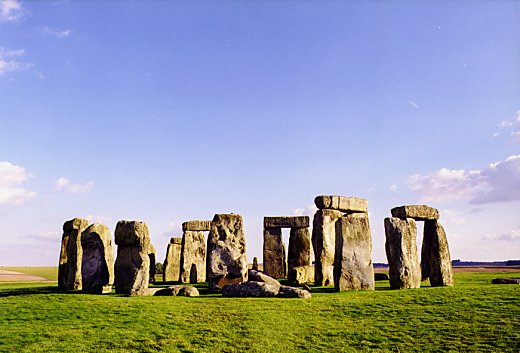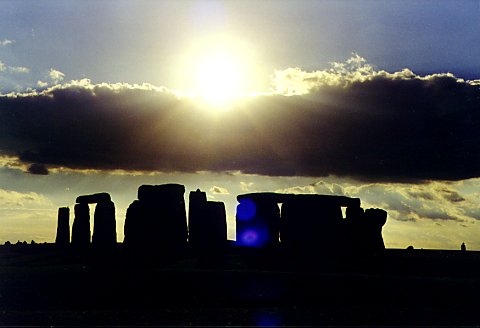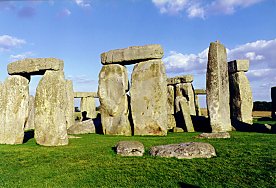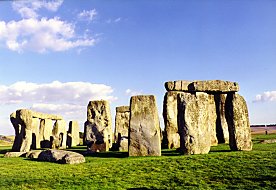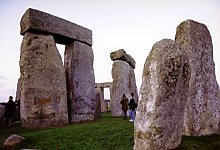
Stonehenge
The site of Stonehenge is older than the Great Pyramids of Egypt. It dates back to 3,000 BC when the first circle was constructed, a bank and ditch surrounded by 56 wooden posts. The first stone circle was built some thousand years later with bluestones, which were brought from Wales. These relatively small stones, which are less cool to the touch are named because of the blue tint the stones have when freshly cut.
The outer circle of standing stones had a complete ring of lintels, the older bluestones made up an inner circle. Inside this stood a horseshoe, made up of five pairs of the largest stones, each with a lintel, these are knows as trilithons. Stonehenge has many myths and legends surrounding it, but it cannot be a coincidence that the alignment of the stones coincide with the rising and setting of the sun at the solstices. The Heel stone outside the circle helps with this alignment, and marks the start of the Avenue, which must have been the ceremonial route to enter Stonehenge.
|
